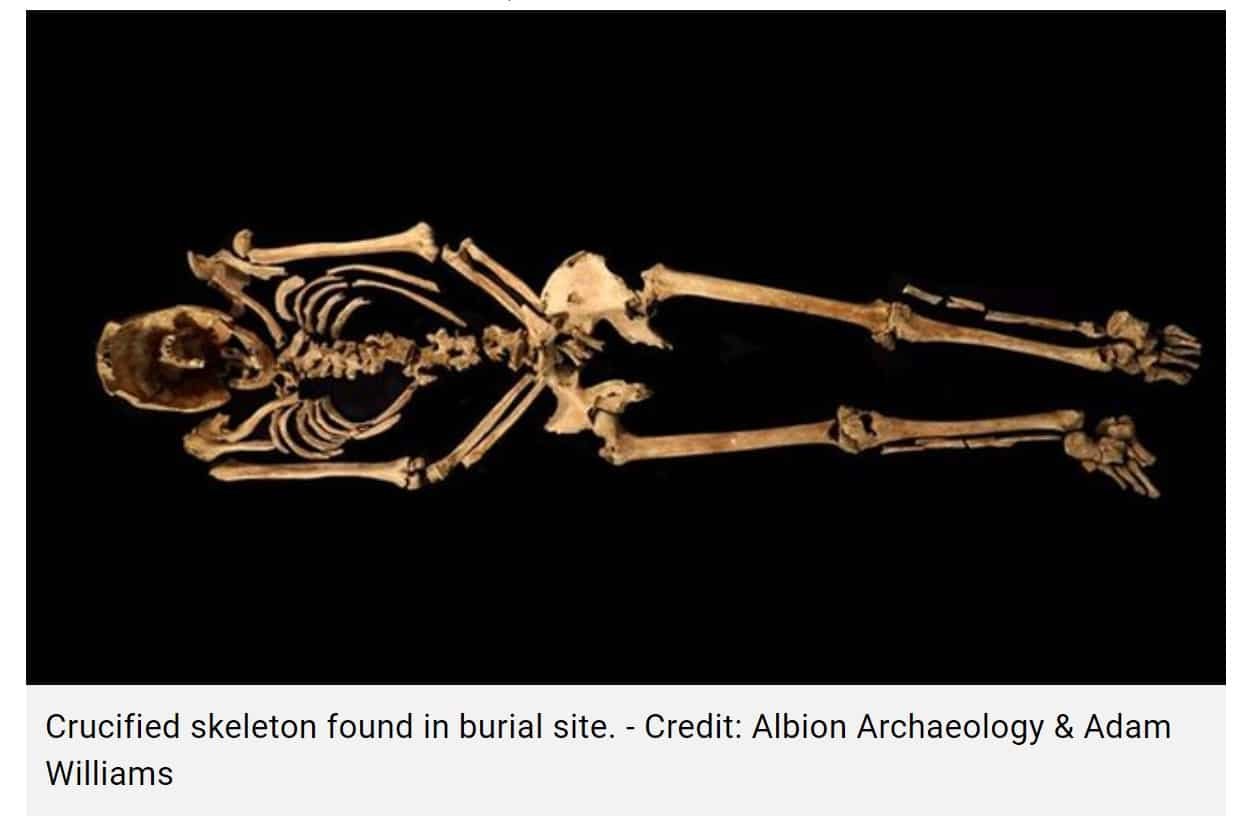
Guardian: Found at the site of a future housing development in Cambridgeshire, the near 1,900-year-old skeleton at first did not seem particularly remarkable.
Aged 25 to 35 at the time of death, the man had been buried with his arms across his chest in a grave with a wooden structure, possibly a bier, at one of five cemeteries around a newly discovered Roman settlement at Fenstanton, between Roman Cambridge and Godmanchester.
I’m not sure I can beat this headline 😲: The best evidence for #crucifixion in #Roman Britain has been found at Fenstanton in Canbridgeshire …. #archaeologyhttps://t.co/zuxseESIcR
— Prof Susan Oosthuizen 💙 (@DrSueOosthuizen) December 8, 2021
But once his remains were removed to a laboratory in Bedford, a grisly discovery was made – a nail through the heel bone that experts now say is the best physical evidence of a crucifixion in the Roman world.
A Roman roadside settlement has been discovered by Albion Archaeology while carrying out an excavation in Fenstanton in 2017 on behalf of Tilia Homes. https://t.co/LZU1o8f0Km
— Hunts Post (@huntspost) December 8, 2021
Nails used for crucifixion – the method of capital punishment by which the victim is tied or nailed to a large wooden beam and left to hang until death – are a rare find, most likely because the victims would not often have received proper burial and, contrary to popular views, it was commonly carried out using rope.
🚨 We have made 'Crucifixion in the Fens' FREE ACCESS! 🚨
📚 Read all about the previously unknown Roman settlement, and find out more about David Ingham and Corinne Duhigs' report on what they believe to be evidence for ancient crucifixion here 👉 https://t.co/B4wTwlJ43A https://t.co/F7ra8B40Ya
— ArchaeologyUK (@archaeologyuk) December 8, 2021
But after prolonged analysis crucifixion was established as the only likely explanation, and the first details of the extraordinary find are reported on Wednesday in British Archaeology magazine.
On a wet, dull day in November 2017, the skeleton was uncovered and recorded in situ without the nail being noticed, as it was protruding only a couple of centimetres either side of the heel and was caked in mud. Read more..
ATTENTION READERS
We See The World From All Sides and Want YOU To Be Fully InformedIn fact, intentional disinformation is a disgraceful scourge in media today. So to assuage any possible errant incorrect information posted herein, we strongly encourage you to seek corroboration from other non-VT sources before forming an educated opinion.
About VT - Policies & Disclosures - Comment Policy




The Circuit Board Crucifix and Ancient Virtual Spaces
“Elliott Malkin created…Crucifix NG, a cross made out of a circuit board, which broadcasts the Lord’s Prayer. It doesn’t contain any receiver, the signal is inaudible to the human ear. In fact, it’s the body that works as an antenna.
“Modern Orthodox is my second project that deals with the eruv, a wire that is used to circumscribe Je wish neighborhoods for the observation of the Sabbath. In Modern Orthodox, I built an eruv out of laser beams and wifi surveillance cameras, instead of wires, so that the integrity of the eruv can be monitored from a remote location. One of the reasons I am interested in the eruv is that it is essentially an ancient virtual space, one that exists in the minds of those who respect it. Non-observers who live within the eruv either cannot, or choose not, to see it. I also produced a series of images, the Modern Orthodox Transmissions, as a byproduct of the surveillance portion of the system”.
From we-make-money-not-art website
The Nearly Invisible Wires That Enclose Nearly All Major Cities of The World from Virginia to Gibraltar, Melbourne to Manhattan, Toronto to Tel Aviv.
The Rabbi Philip Rabinowitz Memorial Eruv covers the majority of the District of Columbia, including the National Mall, memorials, The White House, Capitol, the Smithsonian museums, and the National Gallery of Art.
Comments are closed.